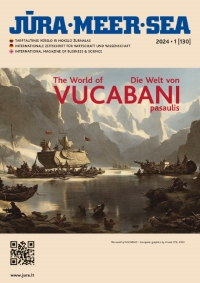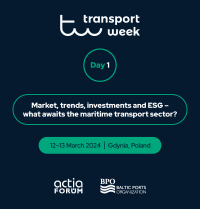“On-shoring,” localization, Trump’s tariffs, Brexit—pay attention to the media, and it’s all too easy to imagine that global trade is contracting.
In fact, of course, it’s doing anything but contracting, as World Trade Organisation statistics make clear. In 2019, for instance, global trade growth of four percent is expected, well above the three percent annual growth rate typical of the early years of the decade.
But if global trade remains in robust health, the same can’t be said for global supply chains. Earthquakes, tsunamis, floods, volcanic eruptions, hurricanes - all repeatedly take their toll. Global warming or not, weather scientists say extreme weather events are becoming more common. Hurricane Harvey, for instance,the 2017 storm that devastated the Caribbean together with parts of the south-eastern United States, was followed just a year later by 2018’s Hurricane Florence, yet another so-called “storm of a lifetime.”
Man-made supply chain risk is just as prevalent. Strikes, wars, port and road congestion, civil unrest, piracy: for importers and exporters alike, far-away events have an unhappy knack for leaving warehouse shelves unfilled and production lines stopped. The result: disappointed customers, frustrated suppliers and a hit to earnings.
What to do about these various risks? Once, the question didn’t arise. Adverse events simply had to be coped with, generally through such means as holding extra inventory or double-sourcing. Neither option is cost-free, of course. So too with “near-shoring” and localization, both of them conscious trade-offs between shorter (and therefore less risky) supply chains and the foregone economies of scale and access to low-cost labor markets.
Businesses today, though, have other options. Some of the world’s very largest companies have invested in dedicated supply chain risk “control towers,” providing them with end-to-end visibility of goods in transit. Car maker BMW, to choose another example, goes further and harnesses real-time data from a variety of publicly-available sources, super-imposing it on a global map of suppliers’ factories, ports and other supply chain-related infrastructure. Like a number of other manufacturers, it acknowledges that the 2011 Japanese earthquake and tsunami served as a wake-up call, highlighting a lack of visibility into its supply chains.
What of other businesses, though? Undeniably, most of the world’s importers and exporters are much smaller and would struggle to fund initiatives of this nature. Are they to be disenfranchised when it comes to risk reduction?
The good news: no - at least not for those businesses prepared to invest in buying-in supply chain risk reduction as a service, from one of a number of emerging specialist supply chain risk intelligence providers. Leveraging a variety of proprietary and publicly-available data sources and intelligence feeds, they provide unprecedented real-time visibility into businesses’ supply chains and the real-time risks that they face. Increasingly, too, such providers are adding artificial intelligence and machine learning to their armories, providing clients with forward-looking predictive abilities, as well.
The bottom line: global supply chains aren’t without risk, but the correct response is to take steps to mitigate that risk, rather than stepping back from global trade.
Omera Khan is a Professor of Supply Chain Management at Royal Holloway University of London (UK) and Executive Strategy Advisor for Risk Intelligence.
The opinions expressed herein are the author's and not necessarily those of The Maritime Executive.
The Maritime Executive










